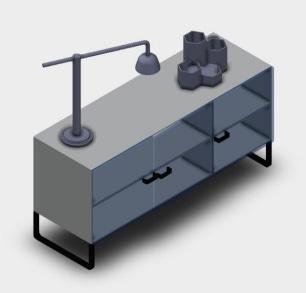The Future Of Medicine: Exploring The Potential Of 3D Bioprinting
Written by Churnika Gudla
Introduction
In recent years, 3D bioprinting has emerged as a groundbreaking technology with the potential to revolutionize the field of medicine. By using a layer-by-layer approach to fabricate complex tissue structures, this innovative technique opens up new possibilities for organ transplantation, tissue regeneration, and personalized medicine.
My journey into the world of 3D bioprinting began in high school, where I learned AutoCAD and Inventor as part of my Biomed Magnet program. AutoCAD, a software known for its precision in creating detailed 2D and 3D designs, provided me with a solid understanding of geometric principles and technical drawing. Inventor, on the other hand, allowed me to delve deeper into 3D mechanical design, simulation, visualization, and documentation. These skills laid the foundation for the complex design and engineering principles used in bioprinting.
What is 3D Bioprinting?
3D bioprinting is an additive manufacturing process that uses bioinks, which are typically composed of living cells and biomaterials, to construct tissue structures. These bioinks are deposited layer by layer, following a digital model, to create three-dimensional structures that mimic the natural architecture of human tissues. Initially developed in the 1980s with the advent of 3D printing, bioprinting has rapidly evolved since Robert J. Klebe first used an inkjet printer to print cells in 1988.
Applications and Advantages
One of the most exciting prospects of 3D bioprinting is its potential to address the chronic shortage of donor organs. With 3D bioprinting, scientists envision a future where custom-made organs can be printed on demand, significantly reducing wait times and eliminating the risk of organ rejection. Beyond organ transplantation, 3D bioprinting holds promise for tissue regeneration. This technology can print skin grafts for burn victims, cartilage for joint repair, and even bone structures for complex fractures.
Moreover, 3D bioprinting offers exciting opportunities in the realm of personalized medicine. Each patient’s unique genetic makeup and medical history can be taken into account to create customized tissue constructs tailored to their specific needs. This could lead to more effective treatments and therapies, reducing the risk of complications and enhancing the overall quality of care.
Challenges and Future Prospects
Despite its immense potential, 3D bioprinting is still in its early stages. Challenges such as ensuring the long-term viability and functionality of printed tissues, scaling up production for clinical use, and navigating regulatory hurdles need to be addressed. However, ongoing research and advancements in this field are paving the way for a future where 3D bioprinting becomes a mainstream medical practice.
The technology's ability to mimic the real structure of tissues and organs, automate complex processes, and reduce human errors makes it a promising tool for future medical treatments. Researchers are continually exploring new methods and materials to improve the biocompatibility and functionality of bioprinted tissues, with the ultimate goal of creating fully functional human organs.
In conclusion, 3D bioprinting offers new hope for patients in need of organ transplants, tissue regeneration, and personalized treatments. As technology continues to evolve, the dream of printing fully functional human organs may soon become a reality, transforming healthcare as we know it.
Churnika’s Designs
References:
UPM BIOMEDICALS. “What Is 3D Bioprinting? How Does 3D Bioprinting Technology Work?” What Is 3D Bioprinting? | 3D Bioprinting Technology | UPM Biomedicals, www.upmbiomedicals.com/solutions/life science/what-is
Written by Churnika Gudla from MEDILOQUY



